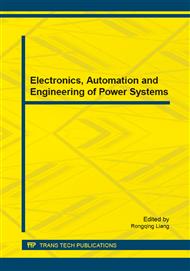p.596
p.600
p.604
p.608
p.617
p.621
p.625
p.629
p.633
Reconstruction of EEG Signal Based on Compressed Sensing and Wavelet Transform
Abstract:
This paper, both theoretically and numerically, investigates an effective reconstruction of EEG signal. An optimization model is presented, which unifies different sparse signals. The model is solved by employing the proximal algorithm. Based on the theoretical analysis, the simulation of EEG signal is performed. Sparse representation of EEG signal is got by the technique of wavelet transform and the signal denoising is also obtained. Then, by using compressed sensing, the EEG signal is reconstructed. Our results show that the reconstructed signal is in good agreement with the original signal and retains the leading characteristic.
Info:
Periodical:
Pages:
617-620
Citation:
Online since:
February 2015
Authors:
Price:
Сopyright:
© 2015 Trans Tech Publications Ltd. All Rights Reserved
Share:
Citation:


